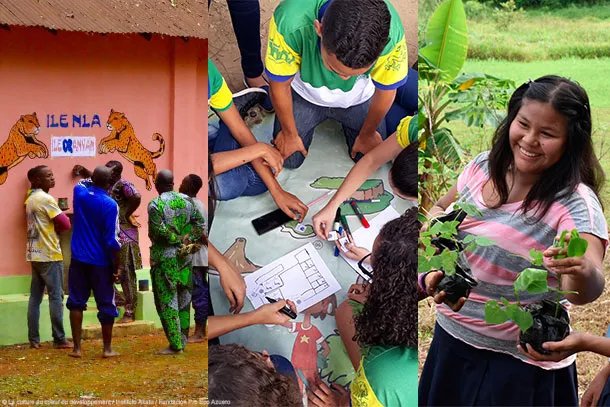Valorant Meta Guide: Best Agents, Strategies & Pro Tips

Staying competitive in Valorant’s ever-evolving landscape means keeping up with the latest meta shifts, agent tier lists, and pro strategies. The 2025 meta has introduced significant changes to what works best on the competitive ladder. This guide breaks down everything you need to dominate your matches – from top-performing agents to mechanical skills and team-based strategies.
Current Meta Overview: Top Agents in 2025
The Valorant meta in 2025 has solidified around several standout agents that consistently deliver results across all skill tiers. Recent patches and map adjustments have reshaped the competitive landscape, with certain agents rising to must-pick status.
S+ Tier Agents Dominating Ranked
Jett maintains her S+ tier status thanks to unmatched mobility and entry potential. Her dash remains the most reliable escape mechanism, while her verticality creates unique angles that defenders struggle to counter. Her ultimate blade storm economy provides incredible round-winning potential on eco rounds.
Clove has emerged as another S+ tier powerhouse. Their smoke utility combined with the game-changing resurrection mechanic offers unprecedented round-turning capabilities. What makes Clove exceptional is their ability to continue providing value even after death – a unique trait that no other agent possesses.
Cypher has climbed to the top tier following recent buffs to his Trapwire range and ability reclaim mechanics. His site control potential makes him invaluable for defense, while his information-gathering toolkit provides constant intel without requiring active presence. The meta increasingly favors these persistent utility agents over pure fraggers.
Strong Contenders in S-Tier
Chamber, Reyna, Raze, and Sage round out the S-tier picks, each bringing specific strengths to team compositions. Chamber’s precision and teleport offer reliable holding power, while Reyna’s self-sufficiency makes her perfect for solo-queue ranked climbers. Raze excels on maps with tight corridors, and Sage’s wall and heal utility remain fundamental to executing strategies.
Map-specific meta variations exist – Jett performs exceptionally well on open maps like Ascent where her vertical play creates unique angles, while Clove dominates tighter maps where temporary health and smoke disruption can completely shut down pushes.
Mechanical Skills Enhancement
Raw mechanical skill remains a crucial factor in climbing the Valorant ranks. Professional players have refined certain techniques that consistently yield better results in the current meta.
Optimizing Your Aim
The 2025 meta favors a hybrid crosshair placement approach. Keep your crosshair at head level while moving, but prioritize pre-aiming common angles where enemies are likely to appear. Top players have moved away from highlight-reel flick shots toward smooth horizontal micro-adjustments that provide more consistent tap-fire accuracy.
Sensitivity settings among professionals have consolidated in the 260-320 eDPI range (DPI × in-game sensitivity), allowing for precise control with a combination of wrist and arm movements. Crosshair trends continue moving toward smaller, high-contrast designs that maintain visibility during intense firefights.
Adding mid-session aim training between matches has proven effective. Short 10-15 minute routines that focus on tracking and target switching specifically tuned for Valorant’s movement patterns show measurable improvements in flick accuracy and reaction time.
Movement Techniques
Counter-strafing remains a crucial skill – tapping the opposite movement key before shooting resets accuracy in split-second duels. This technique substantially increases first-shot precision when peeking corners or engaging multiple opponents.
Effective positioning now involves mastering off-angles, utilizing vertical elevation with agents like Jett and Omen, and understanding how to use map geometry (chokepoints, boxes, ledges) to create unpredictable engagements that favor your weapon’s effective range.
Agent-Specific Strategies
Mastering individual agents requires understanding their unique potential and how they fit into team compositions.
Optimizing Clove’s Kit
Clove’s effectiveness comes from pre-planned smoke placements combined with aggressive lurking tactics. The current meta favors using Clove’s resurrection ability proactively rather than reactively – planning deaths around ultimate availability maximizes the value of their post-mortem utility.
Cypher Setups
Successful Cypher players vary their Trapwire and Spycam placements round-by-round to avoid predictability. The newly buffed ability reclaim mechanics allow for mid-round adaptations that confuse opponents. Top Cypher players use Cyber Cages not just for vision blocking but as sound cues to detect pushes.
Underutilized Synergies
Agents like Gekko and Sage offer powerful ability combinations that remain underutilized. Gekko’s Dizzy flash paired with Sage’s slow orbs creates windows for easy eliminations. Meanwhile, Jett with Sage enables respawn wall boosts, and Cypher paired with Omen creates layered site denial strategies that are extremely difficult to break.
Team Communication & Strategy
Effective teamwork separates average players from exceptional ones in the current meta.
Teams now use simplified, map-specific callouts standardized for referential clarity. The most successful squads layer utility in precise sequences – smokes followed by flashes, then initiator utility like Breach’s stuns followed by Raze’s grenades for maximum disruption.
Economy management has evolved beyond basic save rounds. The current pro meta emphasizes controlling mid-round aggression, particularly on maps like Ascent and Lotus, to break the enemy’s economy over multiple rounds rather than focusing solely on individual round wins.
Hardware & Setup Optimization
Having the right equipment removes technical limitations to your gameplay.
High-refresh monitors (240Hz+) and low-latency mice with polling rates above 1000Hz deliver noticeable improvements in aiming precision and tracking fluidity. Frame rates should be locked above 144fps to ensure smooth input and minimize visual stuttering during critical engagements.
Network optimization remains crucial – using wired connections, prioritizing game traffic on your router, and minimizing background bandwidth usage all contribute to reduced latency. The best players use gaming-focused peripherals: lightweight mice with high DPI adjustability, mechanical keyboards for rapid inputs, and noise-isolating headsets for clear communication.
Professional tools and software can provide additional advantages on Battlelog, where many players find legal enhancements that improve visual cues and system performance without compromising competitive integrity.
Climbing the Ranks: Psychological Edge
Mental performance separates good players from great ones in Valorant’s competitive environment.
Top players implement focus routines between matches – short meditation or breathing exercises during queue times reset mental fatigue. Maintaining proper hydration and nutrition balances cognitive performance during extended play sessions.
Tilt management is handled through structured cooldown periods after losses. Professional players emphasize focusing on process improvements over results, using post-game VOD reviews to analyze mistakes rather than dwelling on losses.
Final Thoughts
The 2025 Valorant meta rewards players who master the top-tier agents while developing solid mechanical foundations and team strategies. Adapting to these meta shifts requires dedication to practice, willingness to adjust playstyles, and continuous learning from the competitive scene.
By combining agent mastery with refined mechanics and team coordination, you’ll be well-positioned to climb the ranked ladder and dominate your matches in Valorant’s competitive ecosystem. Remember that meta knowledge only provides the framework – consistent application and practice turn that knowledge into competitive success.





